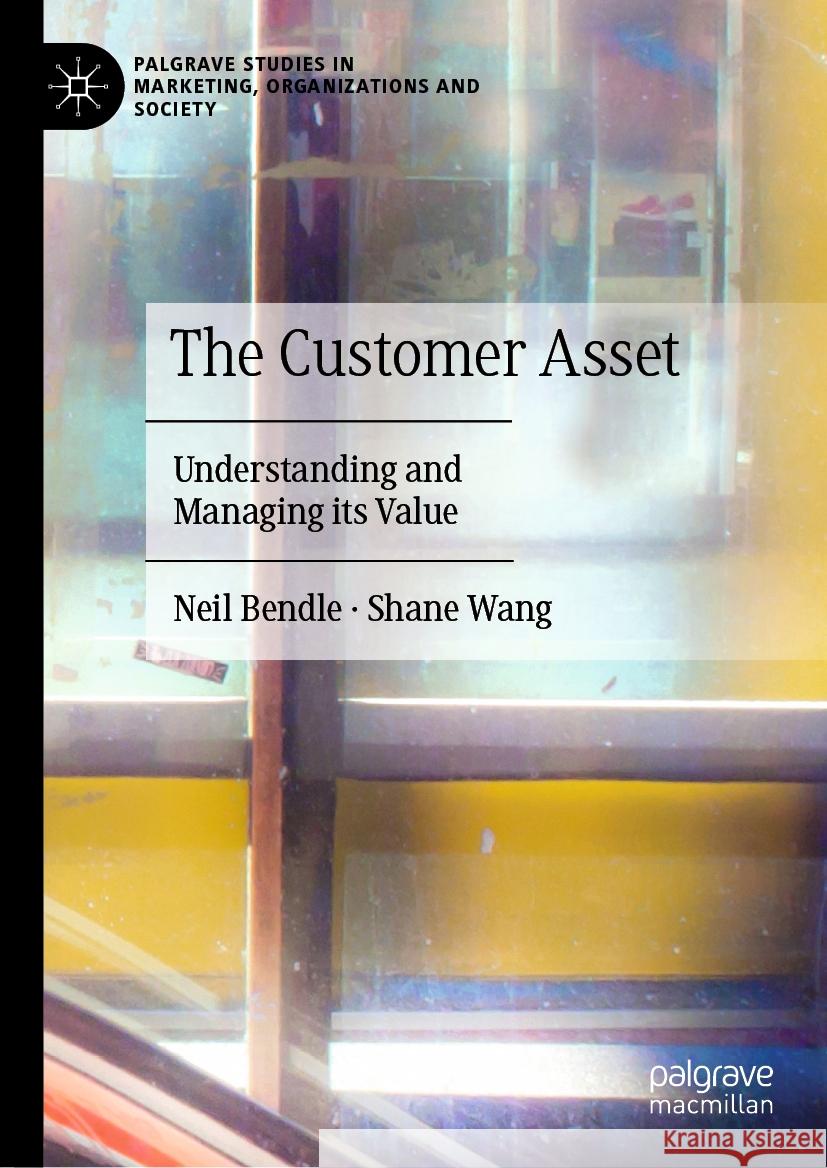The Customer Asset: Understanding and Managing Its Value » książka



The Customer Asset: Understanding and Managing Its Value
ISBN-13: 9783031474200 / Angielski
The Customer Asset: Understanding and Managing Its Value
ISBN-13: 9783031474200 / Angielski
(netto: 172,90 VAT: 5%)
Najniższa cena z 30 dni: 154,18
ok. 22 dni roboczych
Bez gwarancji dostawy przed świętami
Darmowa dostawa!
Table of Contents
1 Introduction: What is the value of your customer? 6
1.1 Seeing the Customer As An Asset 7
1.2 Why Does It Matter If Customers Are Not Seen As Assets? 10
1.3 The History of CLV 12
1.4 What We Need 14
1.5 Why This Book Is Different 15
1.5.1 Sees Customers as both External and Internal 16
1.5.2 Unites Disparate Ideas 16
1.5.3 Focuses on Communication Not Math 18
1.5.4 Puts the Onus on Those Driving Customer Strategy to Measure Value 19
2 The VARIED Tasks of the Customer Asset Approach 24
2.1 V) Corporate Valuation 24
2.2 (A) Acquisition 25
2.3 (R) Retention 25
2.4 (I) Internal Reporting (Managerial Accounting) 27
2.5 (E) External Reporting (Financial Accounting) 27
2.6 (D) Data Flexibility 28
3 The Customer Asset Approach 30
3.1 Principles for Aiding Decision-making 30
3.1.1 The Customer Asset Is a Monetary Value 31
3.1.2 The Customer Asset Approach Is Designed To Aid Decisions 32
3.1.3 What Is Relevant And Irrelevant? 35
3.1.4 Acquisition Costs 38
3.1.5 A Prediction of the Future 44
3.2 Prior Perspectives 46
3.2.1 Brand Assets versus Customer Assets 46
3.2.2 Customers Differ 47
3.2.3 The Shadow of Customer Equity 50
3.3 Estimating CLV 55
3.3.1 The Lost For Good Approach 59
3.3.2 Always a Share Approach 61
3.3.3 Bespoke Predictions 62
3.3.4 Predicting Customer Life Value with AI 65
3.4 Defining CLV When Customers Are Seen As Assets 67
3.5 Time and CLV 70
3.5.1 Historic CLV 71
3.5.2 Full Life CLV 72
3.5.3 Prospect Lifetime Value 73
3.6 Does CLV Change Over Time? 73
3.7 A General Approach to CLV 74
3.8 The Customer Asset and Beyond 75
3.8.1 Increasing Direct Financial Contributions 77
3.8.2 Indirect Financial Contributions 78
3.8.3 Non-Financial Value 81
4 Who Is The Customer Assets Approach For? 84
4.1 Marketers 84
4.2 Strategists 85
4.3 Senior Managers 86
4.4 Data Analysts 86
4.5 IT Managers 87
4.6 Managerial Accountants 87
4.7 Small Investors 89
4.8 Major Investors and Creditors 90
4.9 Financial Accountants 90
5 Applying the Customer Asset 94
5.1 V: The Customer Asset Approach to Corporate Valuation 94
5.1.1 Corporate Valuation 95
5.1.2 Valuation for Mergers and Acquisition (Part 1) 100
5.2 A: The Customer Asset Approach to Acquisition 101
5.3 R: The Customer Asset Approach to Retention Decisions 104
5.3.1 Retention Decisions for a Firm That Knows Who Its Customers Are 105
5.3.2 Strategic Decisions That Impact Retention 109
5.3.3 Firing Your Customers 110
5.3.4 The Customer asset approach To Developing Your Customers 114
5.4 I: The Customer Asset Approach to Internal Reporting 116
5.4.1 Support of Managerial Decisions Is Not Covered By GAAP 116
5.4.2 Managing the Customer Business 118
5.5 E: The Customer Asset Approach to External Reporting 119
5.5.1 Adding Customers Assets to the Balance Sheet 120
5.5.2 Valuation for Mergers and Acquisition (Part 2) 124
5.5.3 Beyond the Core Financial Statements 126
5.6 D: Data Flexibility 129
5.6.1 Minimalist: A Clear, Consistent, and Flexible Approach 129
5.6.2 Incentive-Compatible: The Interests of Those Adopting It Matter 130
5.6.3 Communicable: Easy To Explain and Consistent With Other Terms 131
5.6.4 Auditable: Credible Because It Can Be Checked 132
5.6.5 Practical: Now Possible To Deliver 133
6 Communication about the Customer Asset Approach 138
6.1 Communicating With Skeptics 139
6.2 Communicating With Accountants 140
6.3 Communicating With Marketers 141
7 Conclusion 144
8 References 146
Neil Bendle is Associate Professor of Marketing in the Terry College of Business at the University of Georgia, USA. He is a fellow of the Association of Chartered Certified Accountants and a director of the Marketing Accountability Standards Board (MASB).
Shane Wang is Professor of Marketing at Virginia Tech Univiersity, USA. His research focuses on artificial intelligence and machine learning techniques with applications in business and social media analytics, firm strategy and management.
Neil Bendle is Associate Professor of Marketing in the Terry College of Business at the University of Georgia, USA. He is a fellow of the Association of Chartered Certified Accountants and a director of the Marketing Accountability Standards Board (MASB).
Shane Wang is Professor of Marketing at Virginia Tech Univiersity, USA. His research focuses on artificial intelligence and machine learning techniques with applications in business and social media analytics, firm strategy and management.
1997-2025 DolnySlask.com Agencja Internetowa
KrainaKsiazek.PL - Księgarnia Internetowa









